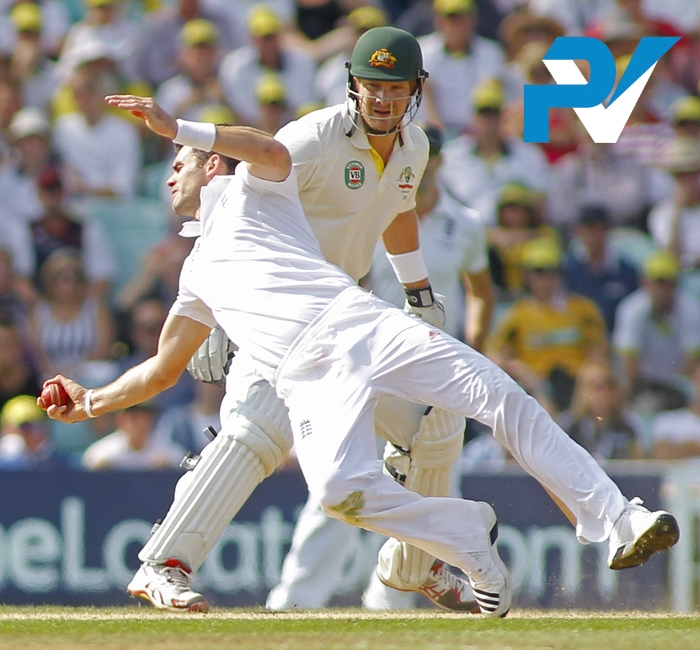How to Improve Cricket Hand-Eye Coordination
 How many times have you thought "just watch the ball"?
How many times have you thought "just watch the ball"?
While it's a useful shorthand for having good eye to hand coordination, the truth is a lot more complex than simply keeping your eye on the ball. Of course, it's not an error to try and watch the ball. It's just that there is also a lot more you can do to get better at hitting, catching and stopping the ball too.
We can make this easy by breaking it down into direct and indirect ways.
What are Good Areas?
Sam Lavery has been thinking about a good line and length, and he's not happy with the term. Read on for his solution.
"Just hit good areas".
That's a phrase I hear almost every day as coach. Whether it's bowlers, batsmen or coaches, "good areas" is a term used widely used but often blindly.
Quick Tip: Take Control of Practice

If you want your practice to go your way, you have to take responsibility.
One thing I often see at nets is the default having a hit: One person batting for 10 minutes with no purpose, and a range of bowlers. A good coach will do all she can to prevent this from happening but in a group setting it doesn't always work as planned.
So, you need to take a moment before, during and after the session.
How to Practice Using Your Feet to Spin
Iain Brunnschweiler, top coach, has a great tip for those wanted to get better against playing spin.
If you want to be effective against spinners, it's really important that you are confident enough to use your feet and get down the wicket. Most spin bowlers know if they are bowling at a player who is confident in their footwork and decision-making, their margin for error becomes very small indeed.
Slide, Dive, Collide: How to Avoid Boundary Catastrophe

Fielding in pairs.
Boundary riding.
Assisted catches.
These are common terms in the modern game. The best players playing with the best players in the IPL and the BBL have bought this to the forefront and we see some incredible fielding feats on club and school cricket grounds all across the world.
However, in the Regional T20 Semi Final of the National T20 Tournament the other day, I saw 2 separate collisions as two fielders both hurtled towards the ball with the same intention. To dive and stop the ball!
The commitment was huge and cannot be faulted. Yet, on another day we could have had a much worse outcome. One of the players cracked rib could have been a lot worse and the head injury could have been hideous.
So how can we help boundary riders to perform their skills and stay safe?
Turn Chaotic Nets into Performance Sessions with Just One Coach
How can one man coach a whole club?
This question is one that many a coach has been confronted with over the years. You've just been offered a senior coaching role at a new club. With visions of one-to-one discussions with batters, technical drills for bowlers, ongoing assessments and fitness development programs, your creative brain is firing.
Soon after, reality hits.
You’re coaching all four teams. They all train during the same two hour session once a week. Many will come and go at different times, and of course they all have a world of different issues they want to work on.
Oh, and you're on your own.
No assistant, no helpers, and no parents who you used to call upon when you were working with the juniors.
Don’t despair, there are still a few ways for you to make your sessions productive as long as you and your players can work to some simple guidelines.
Quick Tip: "I Got Nothing Out of My Session"

You can always get something from training, even the worst session ever.
Take the example of having to face poor bowling in nets. It's common at club level to see below par bowlers spraying the ball around and wasting top batsmen's time. The batter has every right to think the session is wasted.
One Percenters: Unusual Cricket Training Tricks That Actually Work
 Go to a cricket training session anywhere in the world and you will see the usual things: Batting, bowling and fielding. All very sensible.
Go to a cricket training session anywhere in the world and you will see the usual things: Batting, bowling and fielding. All very sensible.
But if you want the edge - if you want a chance at making it as a cricketer - you need to do more than the basics really well. You need an edge. You need to spend time on some of the following things.
The criteria is simple; the following seven training tricks are not directly related to cricket, but all have been proven to enhance your game. All you have to do is try them for a few weeks. If each one boosts your run scoring and wicket taking by just 1% then you will be 5% better in two or three weeks. That's an awesome return on your investment.
So let's get started!
Video: How to Practice Bowling Under Pressure
There is a world of difference between bowling in practice, and bowling under match pressure. If you are going ot be a good bowler, you need to be able to handle the latter. So, here's a simple drill you can do to add pressure to your net sessions.
Here's the video so you can see it in action:
If you can't view it above, click here.
How to Improve Cricket Decision Making
 Coach Sam Lavery moves beyond technical help and into helping you develop players who know how to make good decisions.
Coach Sam Lavery moves beyond technical help and into helping you develop players who know how to make good decisions.
It strikes me that our most important cricket asset is the ability to make decisions. While we focus on important areas like developing technique, getting fitter, bowling faster, and having more creativity at the crease; decisions underpin it all.

